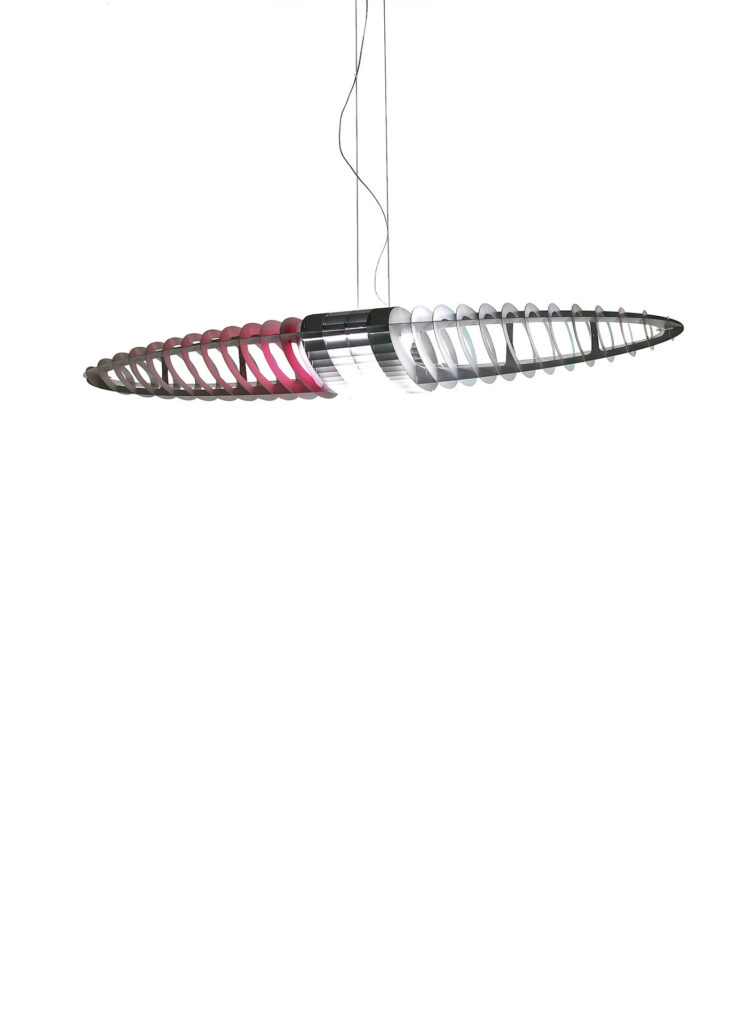Queen TitaniaSospensione
designed by Alberto Meda, Paolo Rizzatto
Raddoppiata nelle dimensioni e nell’impatto visivo, è progettata per l’illuminazione dei grandi ambienti. Una coppia di filtri intercambiabili consente di colorare il corpo in alluminio senza interferire con l’emissione di luce bianca.
Modelli
D17Q
Queen Titania

D17Q
Queen Titania
Specifiche principali
| Typology | Sospensione | ||||||
|---|---|---|---|---|---|---|---|
| Application | Interno | ||||||
| Material |
|
||||||
| Finishes |
|
||||||
| Dimensions (mm) | H 160, L 540, W 1400 | ||||||
| Weight (kg) | 3.05 | ||||||
| Light Source | 2xLED E27 ø max 38mm l 150 mm, 2x205W HSGST/F E27 | ||||||
| Insulation Class | I |




